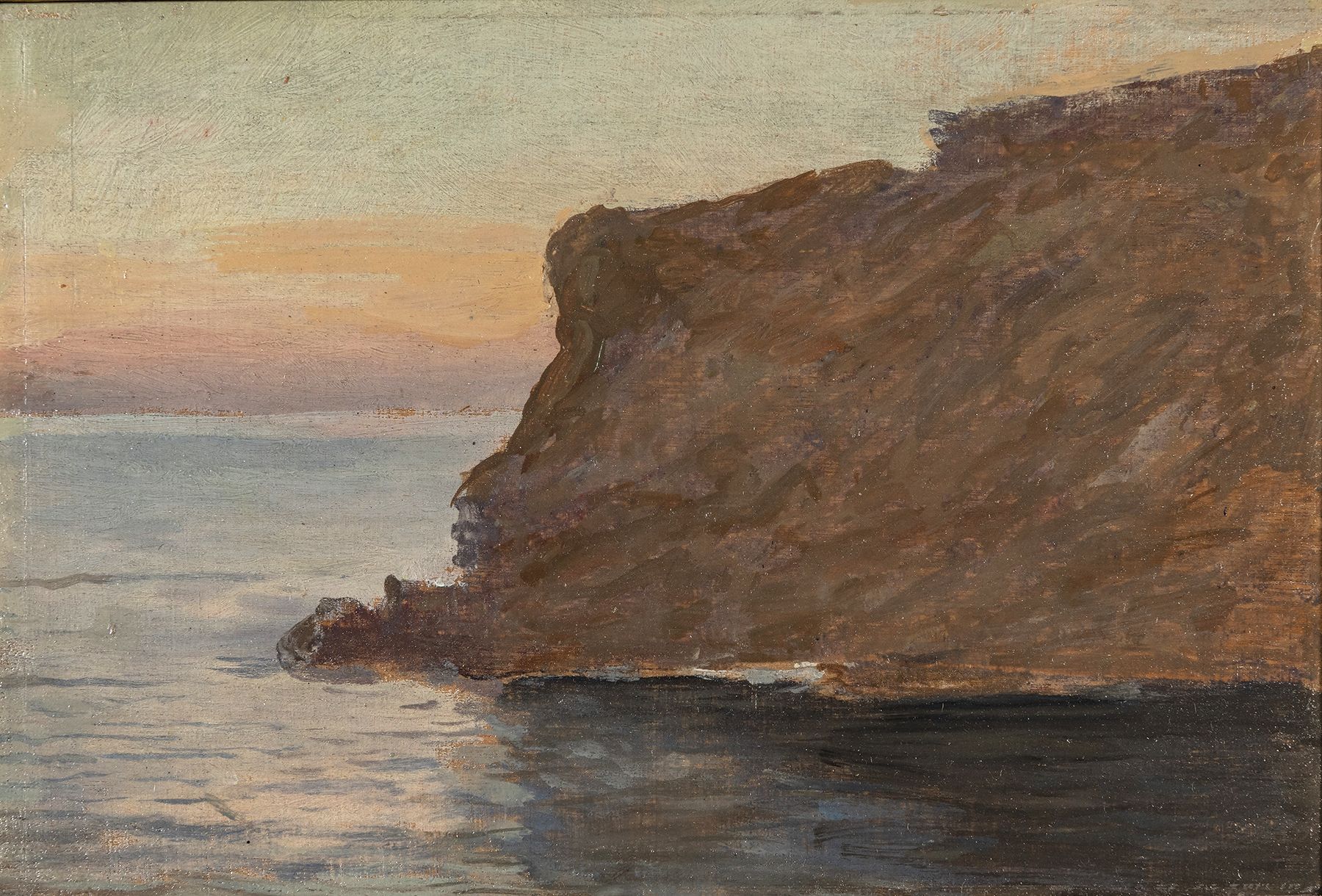William Trost Richards (1833–1905)
Tintagel, c. 1882–85
Oil on panel
McMullen Museum of Art, Boston College, Gift of William M. & Alison S. Vareika ’74, P’09, ’15, LP’16, 2004.13

Jeffery Howe
Professor Emeritus, Art History

This small oil sketch depicts the promontory of Tintagel, the legendary birthplace of King Arthur, at sunset. It is an unusually simple yet forceful composition. Richards spent many months in Great Britain between 1878 and 1880; he became fascinated with the geological formations along the rugged coast of Cornwall, as well as its mythic history as the home of King Arthur. Richards knew that the historic evidence for Arthur’s legend was scant, and no trace of the castle ruins can be seen in this sketch.
Richards described the cliff setting on his first visit: “At the base are many caverns, one especially opens clear through the island and the sea ebbs and flows through it. […] The breakers were rushing through the caves with a sound more melancholy than anything I ever heard, making a great wind as they passed.” The drama of high rock cliffs and crashing waves makes a fitting setting for the romantic legend of the founder of Britain.
Richards, like La Farge, was rooted in the depiction of American landscape but both were also drawn to foreign locales—Richards to Europe, and La Farge to Japan and the South Seas. They shared a particular love for Newport, Rhode Island, where both lived.
